This charming town in Northern Italy's Liguria is very popular for its long-standing music festival, storied floral tradition, and casino, one of only four in Italy. A trendy destination for A-list travellers since the 19th century, Sanremo has both the charm of an ancient borgo marinaro and the appeal of a modern yet cosy city.
A few fun facts: the old town has a very peculiar shape; plenty of exciting events happen during the year; you can find a special local variety of Ligurian focaccia; fairytale villas pop up here and there opening onto enchanted gardens you just can't miss.
Curious to know more? Read on and see what you can do to visit Sanremo like a local.

Our tips to visit Sanremo like a local
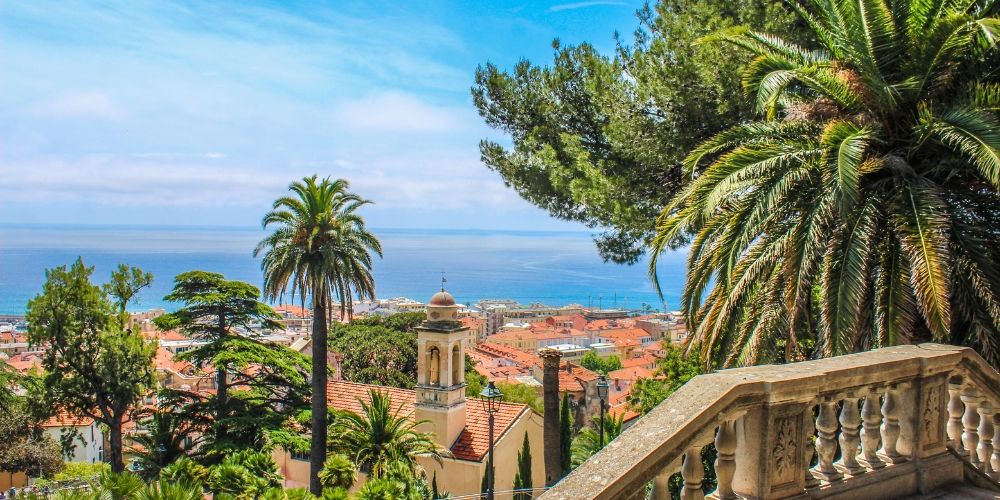
We have already given you a glimpse. Now let’s dive deeper with the best tips to make the most of your stay in the City of Flowers.
In this portion of Italian Riviera aptly named Riviera dei Fiori, the abundance of flowers is a constant delight. It's impossible not to think of them as you stroll along seaside avenues surrounded by exquisite gardens and stately palm trees.
Don't settle for natural scents only, but follow the fragrant aromas wafting from local bakeries, too: the best focaccia of your life may be just around the corner.
The Ariston Theatre, well known across Italy for hosting the Sanremo Music Festival since 1977, stands like a landmark on Via Matteotti, a street lined with shops and stylish places to hang out. But just nearby, there’s also an old cinema where Italian author Italo Calvino used to escape as a child, and shops where you can still see original Art Nouveau side entrances
It's like the synthesis of the town spirit: unexpected gems emerge alongside what you already know. Follow your curiosity, and you won't be disappointed.
Here's what to do in Sanremo like a local, according to Visit Italy.
Travelling in Liguria? Discover the benefits of Genova PassListen to the podcast version of the article with Monna Lisa and Leonardo's voices
10. What to do in Sanremo like a local: strolling through La Pigna
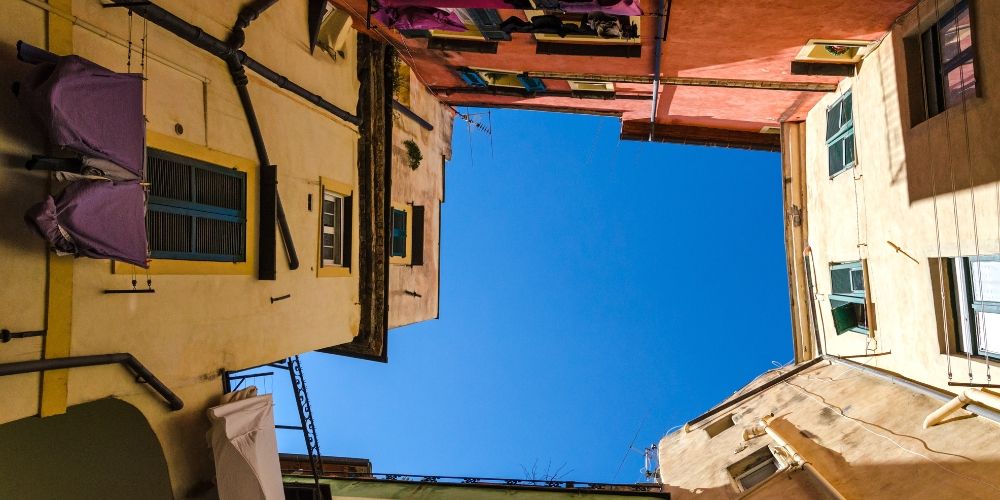
Our visit to Sanremo like a local begins at Porta di Santo Stefano, the entrance marking the boundary between the new town and the city’s old heart.
From this 14th-century stone arch, you access the La Pigna quarter, a veritable fortified citadel.
The name, Italian for pinecone, refers to the shape around which the area developed from the 11th century: a dense network of narrow streets, covered passageways, small squares, terraced houses, and fortifications, all wrapped around the hill.
During your walk around La Pigna, you'll be enchanted by some of Sanremo's most stunning and iconic sights: the picturesque porticos of Piazza dei Dolori, the lush greenery of the Regina Elena Gardens, the historic Saracen Tower, and the sanctuary of the Madonna della Costa, Sanremo's primary (and panoramic) place of worship.
9. Shopping at the mercato

Pop over to the Mercato Annonario, which is open weekday mornings from Monday to Saturday. The recently renovated building dates back to the 1950s and is located on Via Martiri della Libertà.
Locals come here daily for their shopping, but it also draws curious tourists eager to discover and buy plenty of local specialities directly from the producers.
If you love browsing stalls for original clothes or that perfect vintage find, head to the Sanremo market, held on Tuesdays and Saturdays in Piazza Eroi Sanremesi.
With a short walk, you can also reach the city's most famous shopping street, Via Giacomo Matteotti, and its boutiques. Some shops still boast mosaic floors and painted walls dating back to the early 20th century.
If you are looking for a luxury shopping experience, take a look at this article.
8. Taking a seaside stroll
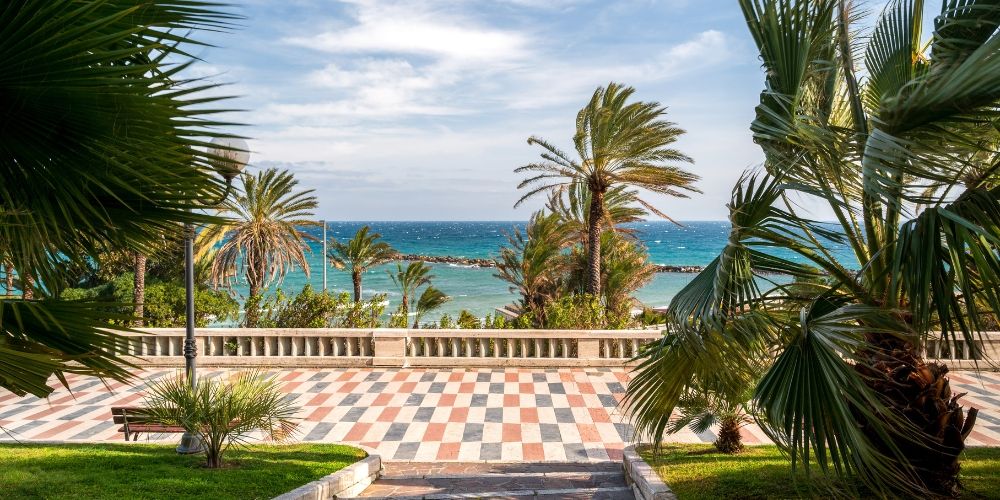
It only takes about 15 minutes to wander along Sanremo's stunning seafront, the Empress's Promenade.
This passeggiata owes its name and charm to Maria Aleksandrovna, wife of Alexander II of Russia, who was so enamoured with Sanremo that she gifted the palm trees that still line its western stretch.
This is easily one of the most enchanting coastal walks on the Riviera, a long, palm-lined avenue overlooking the beach. Stately trees alternate with elegant seafront hotels and manicured gardens, a signature of Sanremo’s style.
Take your time and soak up the atmosphere just as Belle Époque travellers once did.
If you feel like it, visit the old marina to admire the sea's hues during sunset. In the early morning, you can even grab the freshest catch directly from the local fishermen.
Love the sea? Book this Ligurian experience now7. Attending a local event
Local events can really help you connect with Sanremo’s culture.
During the Italian Song Festival, all eyes are on Sanremo, and the whole city seems to revolve around the most iconic music event of the country. Naturally, the town doesn’t hibernate when the show is over.
Numerous events ignite the enthusiasm of citizens and tourists throughout the year. Join in the local festivities to interact with residents and discover the true essence of the place.
Sanremo in Fiore, a joyful explosion of spectacular floral displays that take over the streets, is among the most acclaimed. It takes place every year in spring.
In October, celebrations in honour of the patron saint, San Romolo, provide the opportunity to savour a traditional and folkloric atmosphere.
If you’re into vintage motors, be sure to catch the Sanremo Historic Rally in October, a throwback race where classic cars tear along the Ligurian coast.
6. Visiting a garden
When you visit a place known as the City of Flowers, you’ll need to delve a little to uncover what’s behind the name. You’ll find the answers in its parks, villas, and gardens, some of the loveliest in Italy.
One unmissable spot is dedicated to Queen Elena of Montenegro, wife of King Vittorio Emanuele III. The Regina Elena gardens were laid out in the 19th century, near the historic La Pigna district. While there, enjoy the view over the gulf and Sanremo’s rooftops.
The town’s largest public garden is Villa Ormond, home to exotic and rare plants, including precious ancient rose varieties. The place also includes a small Japanese garden, a palm grove, and the Floriseum, Sanremo’s Flower Museum.
For a more tropical feel, visit the lush Marsaglia Park, a splash of exotic greenery in the heart of Liguria.
5. Savouring Ligurian Delights

Let’s tuck into Liguria’s street food scene, where focaccia reigns supreme. In Sanremo, the local twist is called sardinara, a classic base topped with a bold mix of tomatoes, anchovies, garlic, capers, and Taggiasca olives. A burst of flavour to polish off in a bite or two.
While you’re at it, don’t miss a slice of torta verde (green cake), a crisp puff pastry filled with rice and seasonal vegetables.
Once the snacking’s done, it’s time to get stuck into the serious stuff. A plate of trenette with pesto is a proper Ligurian classic. Start with it and then move on to other local favourites: Sanremese-style rabbit, whipped cod, and red prawns.
For a sweet finish, go for a kiss, but one that’s tasty too: the pretty little Bacio di Sanremo, a threesome of two hazelnut paste cookies hugging a chocolate mousse. That’s amore!
Learn more about the Liguria cuisine4. A bike tour around Sanremo
The Riviera dei Fiori Coastal Park boasts a fantastic cycle path stretching for around 25 kilometres, linking San Lorenzo al Mare to Ospedaletti. It’s a perfect and easy way to explore the area around Sanremo.
As you pedal towards San Lorenzo, you’ll come across a hidden hillside gem: Bussana Vecchia, a village with a character all its own.
An earthquake devastated the area in 1887, turning it into a ghost town. During the 1960s, a group of bold creatives decided to give it a new lease of life. They repaired crumbling buildings, added colours to the streets, and set up quirky craft studios. The village slowly came back to life, thanks to the small community of artists still rocking it.
It’s definitely worth a visit. If you can, stay the night. Most visitors pop in and out during the day. There aren’t many B&Bs, but if you manage to book one, it’ll feel like you’ve got the whole village to yourself.
3. Stepping inside Sanremo’s historic villas
Most visitors snap a few photos from the gates and move on, but if you’re lucky enough to catch Sanremo’s historic villas open to the public, it’s a whole different experience.
For example, Alfred Nobel’s final residence is usually open. The interiors have been faithfully restored, including the study and bedroom featuring 19th-century furnishings, fascinating memorabilia, and original scientific instruments.
Villa Zirio is a neoclassical gem that once hosted Frederick III of Prussia and composer Richard Wagner. While the villa now houses municipal offices, its lush gardens designed by renowned botanist Ludwig Winter are open year-round and well worth a stroll.
Not far off, Villa Ormond is perhaps the most famous for its sprawling botanical park, a riot of exotic plants, palm-lined paths, and shaded corners perfect for lingering. It’s also home to Sanremo’s Flower Museum, the Floriseum.
And while Villa King, Villa Virginia, Villa Bel Respiro and Villa Fiorentina are mostly off-limits (many are now private homes or used for official functions), local guides often offer walking tours that take you close enough to admire their elegant facades and, in some cases, wander through their verdant gardens.
2. Catching an event at the Santa Tecla fortress
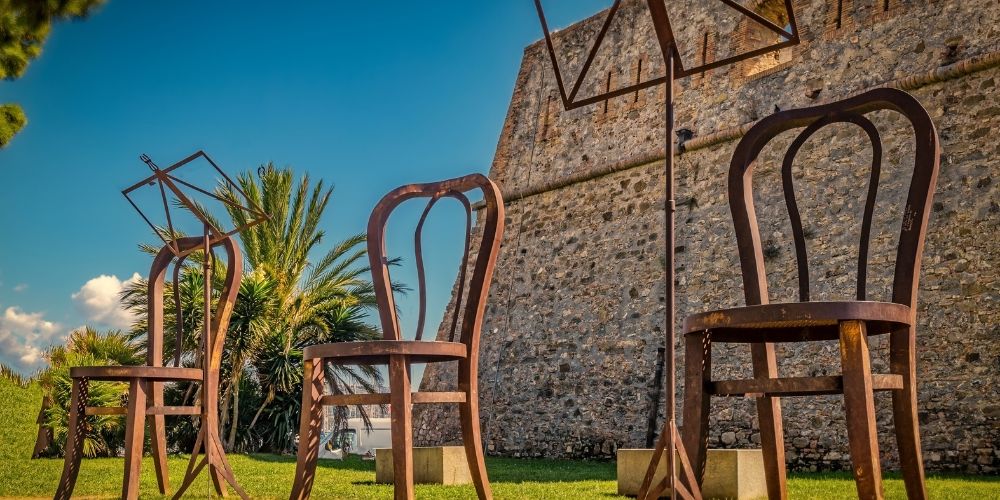
Overlooking Sanremo’s old harbour since the 18th century, the imposing Forte di Santa Tecla is a striking reminder of the city’s layered history.
Built by the Republic of Genoa to keep the town in check and prevent uprisings, it’s one of the best-preserved examples of Ligurian military architecture still standing.
The fortress has had a dramatic glow-up after decades as a barracks and later a prison. Since 2016, it’s become a multifaceted cultural hub, hosting everything from art exhibitions and open-air concerts to sunset yoga sessions, DJ sets, and contemporary dance performances.
Thanks to a buzzing year-round line-up that includes workshops, chess tournaments, photography shows and community meet-ups, the Forte has firmly cemented its place as a cornerstone of Sanremo’s cultural life. Pro tip: check out the official website before your visit. Chances are, there’ll be something cool on while you’re in town.
1. Sanremo for book-lovers
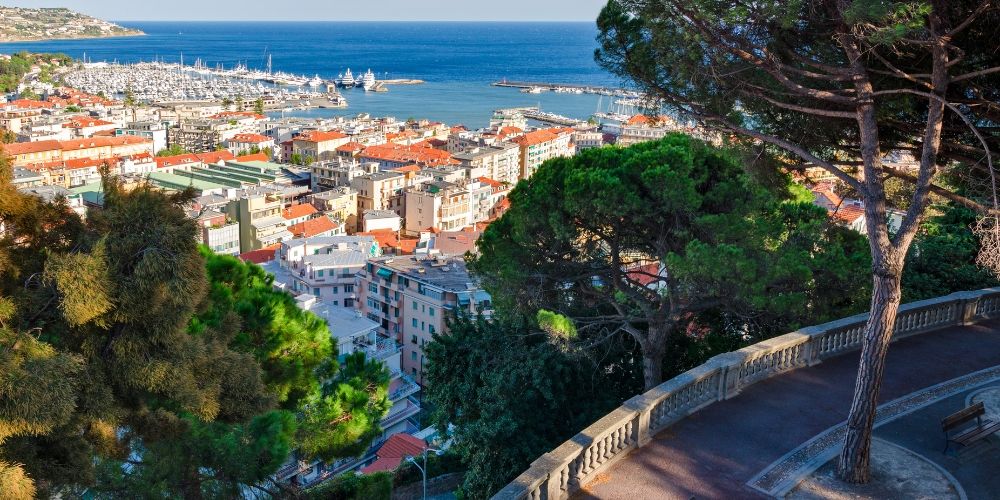
Sanremo was once home to one of Italy’s literary greats, Italo Calvino, who spent much of his childhood and teenage years in this Ligurian seaside town.
He grew up in a villa tucked among tropical plants on the hillside of San Giovanni, a quiet residential area where the family home still stands today. You can’t go inside (it’s visible only from the street), and its appearance has changed a fair bit since the early 20th century, but it could still be a good place to start a literary tour of Sanremo.
Back towards the centre, you’ll find places the young Italo used to frequent: the G.D. Cassini classical high school, the Corradi Public Library, and most notably the old Cinema Centrale on Via Palazzo, a quiet refuge where he’d escape for solitary afternoons.
38 discreet info panels all across town trace the places that marked Calvino’s early years. Together, they form a sort of open-air literary trail: walk it with one of his books tucked under your arm.
Pause in the Pigna gardens or settle by the sea, flip through a few pages of The Baron in the Trees or The Path to the Nest of Spiders, and let Calvino be your quiet travel companion in Sanremo.
About the author
Written on 23/01/2024

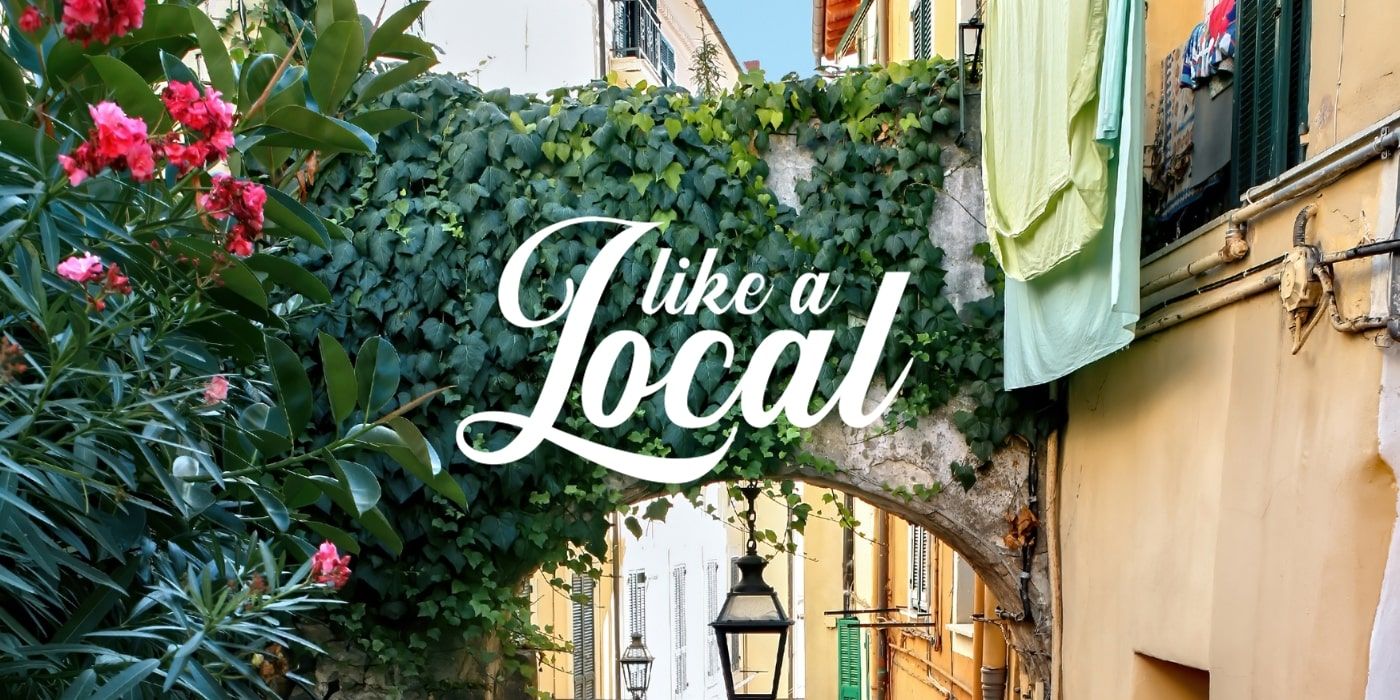

Lorena Calise
The lovely coastal town Italians are mad about. Here are Visit Italy's tips for visiting Sanremo like a local.